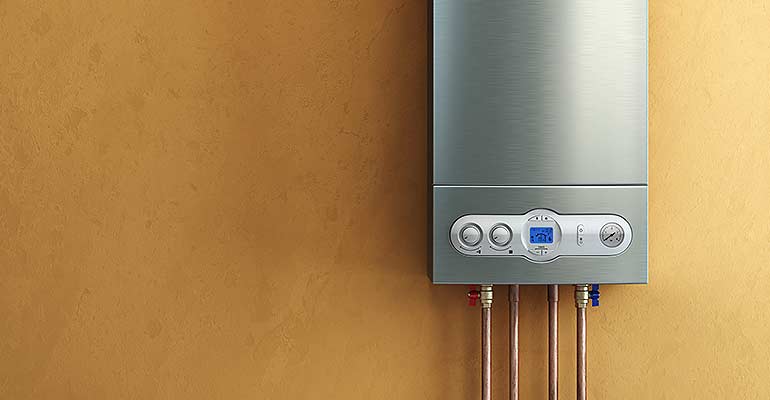How to Maintain Your Home's Hot Water System in Good ConditionSteps to Properly Maintain Your Home's Hot Water SystemUseful Techniques for Maintaining Your Home's Hot Water System
How to Maintain Your Home's Hot Water System in Good ConditionSteps to Properly Maintain Your Home's Hot Water SystemUseful Techniques for Maintaining Your Home's Hot Water System
Blog Article
How do you really feel when it comes to How to Maintain Your Water Heater & Prolong its Life?

Warm water is crucial for everyday convenience, whether it's for a refreshing shower or cleaning recipes. To ensure your hot water system runs successfully and lasts longer, routine upkeep is vital. This short article supplies sensible tips and understandings on just how to keep your home's hot water system to prevent interruptions and expensive repair services.
Intro
Keeping your home's warm water system could appear overwhelming, yet with a couple of straightforward actions, you can guarantee it runs smoothly for years to come. This guide covers whatever from recognizing your warm water system to do it yourself upkeep ideas and recognizing when to call professional help.
Importance of Keeping Your Warm Water System
Normal maintenance not only extends the life expectancy of your hot water system however likewise guarantees it runs successfully. Disregarding upkeep can bring about decreased efficiency, higher energy bills, and even premature failure of the system.
Signs Your Warm Water System Requirements Maintenance
Knowing when your hot water system requires interest can avoid major issues. Watch out for signs such as inconsistent water temperature, strange noises from the heating system, or corroded water.
Purging the Hot Water Heater
Purging your hot water heater eliminates sediment buildup, improving efficiency and prolonging its life.
Monitoring and Changing Anode Rods
Anode poles stop corrosion inside the container. Checking and replacing them when broken is vital.
Complex Concerns Needing Professional Aid
Examples consist of significant leaks, electrical problems, or if your hot water heater is constantly underperforming.
Routine Professional Maintenance Perks
Professional upkeep can include detailed evaluations, tune-ups, and ensuring conformity with safety criteria.
Inspecting and Changing Temperature Setups
Changing the temperature setups makes sure optimal efficiency and safety and security.
DIY Tips for Maintenance
You can do a number of upkeep tasks yourself to maintain your hot water system in leading problem.
Checking for Leaks
Regularly check pipelines and connections for leakages, as these can lead to water damages and higher expenses.
Comprehending Your Warm Water System
Prior to diving into upkeep tasks, it's handy to understand the standard elements of your warm water system. Typically, this consists of the water heater itself, pipes, anode poles, and temperature controls.
Month-to-month Maintenance Tasks
Normal monthly checks can aid catch minor issues before they rise.
Testing Pressure Alleviation Valves
Testing the pressure safety valve ensures it operates correctly and protects against excessive stress buildup.
Protecting Pipelines
Protecting warm water pipes minimizes warmth loss and can save energy.
When to Call an Expert
While do it yourself upkeep is advantageous, some problems need expert experience.
Conclusion
Routine upkeep of your home's warm water system is important for performance, long life, and cost savings. By adhering to these tips and understanding when to look for professional help, you can make sure a reliable supply of hot water without unforeseen disturbances.
How to Maintain an Instant Hot Water Heater
Before tinkering with your hot water heater, make sure that it’s not powered on. You also have to turn off the main circuit breaker and shut off the main gas line to prevent accidents. Also turn off the water valves connected to your unit to prevent water from flowing into and out of the appliance. 2. When you’re done, you have to detach the purge valves’ caps. These look like the letter “T” and are situated on either side of the water valves. Doing so will release any pressure that has accumulated inside the valves while at the same time avoid hot water from shooting out and burning your skin. 3. When the purge valves’ caps are removed, you have to connect your hosing lines to the valves. Your unit should have come with three hoses but if it didn’t, you can purchase these things from any hardware or home repair shops. You can also get them from retail stores that sell water heating systems. Read the user’s manual and follow it to complete this task properly. When the hosing lines are connected, open the purge port’s valves. 4. You should never use harsh chemical cleaners or solutions when cleaning your unit. Make use of white vinegar instead. It should be undiluted and you’ll probably use about 2 gallons. 5. Now flush your water heater. This task should probably take about 40 minutes. We can’t give you specific directions for this because the procedure is carried out depending on the type, model and brand of your heater. With that being said, refer to the user’s manual. 6. When you’re done draining the unit, you have to turn off the purge port valves again. Remove the hosing lines that you earlier installed on each of the water valves. Put the valve caps (purge port) back in their respective places and be very careful so as not to damage the rubber discs that are found inside these caps. 7. Now that everything’s back in place, check your user’s manual again to find out how to reactivate your water heating system. 8. Once it is working, turn one of your hot water faucets on just to let air pass through the heater’s water supply pipes. Leave the tap on until water flows smoothly out of it. https://www.orrplumbing.com/blog/2014/september/how-to-maintain-an-instant-hot-water-heater/

I have been very taken with How to Maintain Your Water Heater & Prolong its Life and I hope you liked the entire blog entry. Are you aware of someone else who is excited by the niche? Take a moment to promote it. I value your readership.
Pricing Report this page